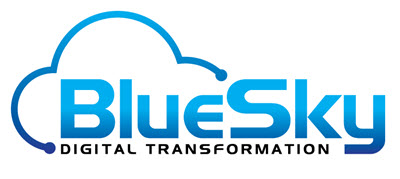Introduction
In the fast-paced world of modern business, digital transformation is the key to staying competitive and relevant. An essential component of this transformation involves transitioning from outdated on-premise systems, such as traditional Customer Relationship Management (CRM) software, to advanced cloud-based solutions. This article explores the journey of migrating from a “broken” CRM system hosted on-premise to Microsoft Dynamics 365 in the cloud. Additionally, it emphasizes the critical role of strategy mapping to ensure alignment between the end system and business processes.
The Legacy of On-Premise Systems
Once considered groundbreaking, legacy on-premise CRM systems often turn into operational hindrances for various reasons:
- Maintenance and Upgrades: Maintaining and upgrading legacy systems comes with high costs and disruptions.
- Scalability Constraints: Expanding or downsizing an on-premise system is complex and time-intensive, hindering agility.
- Accessibility Limitations: On-premise systems restrict accessibility, inhibiting remote work and real-time collaboration.
- Integration Complexities: Integrating outdated systems with newer applications can be intricate and costly.
- Security Vulnerabilities: Aging systems are susceptible to security breaches and data vulnerabilities.
Elevating Business with Dynamics 365 in the Cloud
Migration to Microsoft Dynamics 365 in the cloud presents a multitude of advantages to address these challenges:
- Operational Costs: Cloud-based solutions eliminate upfront hardware investments and ongoing maintenance costs.
- Scalability and Flexibility: Dynamics 365 on the cloud adapts resources to demand, ensuring optimal performance.
- Remote Accessibility: Cloud platforms enable anytime, anywhere access, fostering remote work and bolstering productivity.
- Streamlined Integration: Dynamics 365 offers seamless integration capabilities, connecting with other applications effortlessly.
- Robust Security: Microsoft’s cloud services provide robust security features, including encryption and regular updates.
Strategy Mapping: Fusing Technology with Business Ambitions
A triumphant migration to Dynamics 365 hinges on more than just technological decisions. Strategy mapping is pivotal to ensure that the new CRM system aligns with business processes and objectives.
- Process Assessment: Before migration, analyze existing processes to identify pain points and opportunities for enhancement.
- Clear Goals: Define the CRM migration’s objectives—be it enhancing customer engagement, optimizing sales procedures, or refining data analytics.
- Stakeholder Involvement: Engage key stakeholders from various departments to shape the new system according to their needs.
- Customized Adaptations: Tailor Dynamics 365 to match your organization’s workflows, accommodating specific processes.
- Change Management: Prepare employees for the transition through training and communication about the system’s benefits. Address concerns for smooth adoption.
- Continuous Refinement: Regularly evaluate the system’s performance against objectives post-migration. Make necessary adjustments to maintain alignment with business goals.
Conclusion
Transitioning from a “broken” on-premise CRM system to Microsoft Dynamics 365 in the cloud is a strategic move that can rejuvenate business operations. The benefits of cost-effectiveness, scalability, accessibility, integration, and security are compelling reasons to embrace this transformation. Yet, the key to success lies in meticulous strategy mapping that ensures Dynamics 365 aligns seamlessly with business processes and ambitions. By intertwining technological innovation with a comprehensive business strategy, organizations can realize a seamless and impactful digital transformation.

No comment yet, add your voice below!